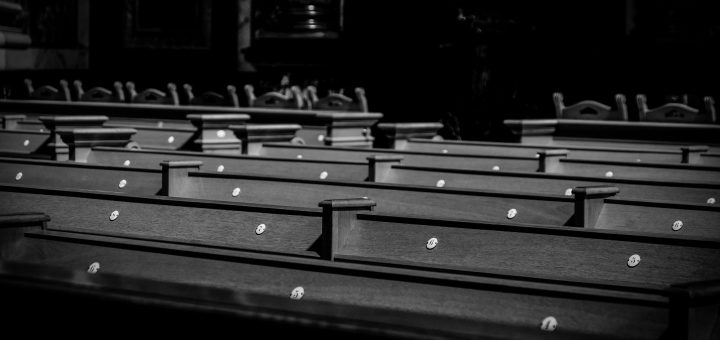SCC Denies Leave to Appeal Vicarious Liability Finding Against St. John’s Archdiocese in Sexual Abuse Scandal

CONTENT WARNING: Childhood sexual abuse and religious institutions.
Newfoundland and Labrador’s Catholic community has been plagued by legacies of sexual abuse and scandal. In particular, a long history of sexual abuse inflicted against young, orphaned boys in the care of Christian Brothers at the Catholic orphanage Mount Cashel in St. John’s, was exposed in the 1980s, and culminated in a public inquiry of the abuse in the early 1990s. While a 1999 lawsuit filed by four former Mount Cashel residents and victims of abuse resulted in a judgment against the Christian Brothers and a liquidation of its assets to partially pay for damages, an additional action was brought to hold the St. John’s Archdiocese vicariously liable for the abuse. In John Doe (G.E.B. #25) v The Roman Catholic Episcopal Corporation of St. John’s, 2020 NLCA 27 [John Doe (G.E.B. #25)] the Court of Appeal of Newfoundland and Labrador (“NLCA”) unanimously ruled that the Archdiocese was vicariously liable for the Brothers’ abuse of Mount Cashel victims. The decision, which was recently denied leave to appeal to the Supreme Court of Canada (“SCC”) (SCC 39343), has significant implications for finding the Catholic Church vicariously liable for abuses committed within its institutions by third parties, such as teachers and civilian workers.
The Test for Vicarious Liability
The two-step test for vicarious liability was clarified by the SCC in K.L.B v British Columbia, 2003 SCC 51 [K.L.B.]. There, the SCC explained that a plaintiff must show:
- “the relationship between the tortfeasor and the and the person or body against whom liability is being sought is sufficiently close as to make a claim for vicarious liability appropriate”; and
- that the tort itself “is sufficiently connected to the tortfeasor’s assigned tasks that the tort can be regarded as a materialization of the risks created by the enterprise” (K.L.B., para 19).
This two-part analysis is guided by the twin policy objectives of allowing vicarious liability claims, which, as the NLCA highlights, are to obtain a “just and practical remedy” for those who suffer harm as a result of wrongs committed by an agent of an enterprise, and the deterrence of future harm (John Doe (G.E.B. #25), para 47).
Evidently, the test is highly contextual. The history of the relationship between the two parties—the tortfeasor and the enterprise—plays a significant role in establishing the first stage of the analysis. Similarly, the tort itself must have manifested out of the assigned tasks and responsibilities given to the tortfeasor by the enterprise, for instance, within an employment relationship.
Factual Background
The history of Mount Cashel itself is significant to this case. In 1875, the Catholic Archbishop of Newfoundland approached the Irish Christian Brothers—a layperson community within the Catholic Church that was established to educate and care for orphaned Catholic children—to teach in Newfoundland (John Doe (G.E.B. #25), para 26). The Christian Brothers were an “Order of Pontifical Rite,” which meant that, through their chain of command, they were answerable to the Vatican, and subject to Canon Law (John Doe (G.E.B. #25), paras, 25, 27).
In the 1890s, the Archdiocese established Mount Cashel, a Catholic orphanage for boys staffed by Christian Brothers (John Doe (G.E.B. #25), para 30). The property on which Mount Cashel stood was conveyed in trust to the Christian Brothers for the express purpose of keeping “an Industrial Home and Orphanage,” and included a right of reversion clause for the property to be conveyed back to the Archdiocese should those operations cease (John Doe (G.E.B. #25), para 31). The property also contained a chapel, St. Raphael’s, which was assigned a priest to not only provide services to local parishioners, but also to tend to “the spiritual and religious needs” of Mount Cashel’s residents (John Doe (G.E.B. #25), para 33).
The four plaintiffs were residents of Mount Cashel between the 1940s to 1950s, and their claims of abuse relate to events that took place between 1951-1958 by five different Christian Brothers (John Doe (G.E.B. #25), para 35). Following the public’s exposure to the orphanage’s history, Mount Cashel shut down in 1989 (John Doe (G.E.B. #25), para 38). After the release of the 1991 public inquiry into the abuses, a number of criminal and civil proceedings were launched against both the Newfoundland government and the Christian Brothers, many of which resulted in settlement agreements for victims (John Doe (G.E.B. #25), para 37).
Trial Decision
At the Supreme Court of Newfoundland and Labrador (John Doe (G.E.B. #25 v The Roman Catholic Episcopal Corporation of St. John’s, 2018 NLSC 60 [John Doe (G.E.B. #25) NLSC]), the plaintiffs put forward three arguments. They claimed, first, that the Archdiocese was vicariously liable for the Christian Brothers’ sexual assault of the plaintiffs; second, that the Archdiocese was vicariously liable for the negligence of St. Raphael’s priest, Monsignor Ryan, who, in the context of his role as spiritual advisor to the Mount Cashel residents, had been told of the sexual abuse taking place at the orphanage; and third, that the Archdiocese itself was negligent in the abuses taking place at Mount Cashel.
The trial judge dismissed all three of the plaintiffs’ arguments. On the first issue, Justice Faour held that there was no evidence that there was a “joint venture” between the Archdiocese and the Christian Brothers, and referred to the Archdiocese’s role in Mount Cashel as “supportive” (John Doe (G.E.B. #25) NLSC, para 106). He further held that this lack of clear collaboration between the Archdiocese and the Christian Brothers in carrying out the operations of Mount Cashel did not give rise to a sufficiently close relationship between the two (John Doe (G.E.B. #25) NLSC, para 106). In addition, Justice Faour determined that the Archdiocese did not have daily control over the operations of Mount Cashel, and therefore liability for the Christian Brothers’ conduct could not be vicariously imposed on it (John Doe (G.E.B. #25) NLSC, para 200).
With respect to the other two claims, Justice Faour found that there was no duty of care between Monsignor Ryan and the Mount Cashel residents, and therefore he could not be held negligent, and the Archdiocese could not be held vicariously liable (John Doe (G.E.B. #25) NLSC, para 264). Finally, he held that the Archdiocese could not itself be held negligent as there was no evidence that it had direct knowledge of the Brothers’ abuse, or, if it did have knowledge, there was no evidence that it inappropriately handled the situation (John Doe (G.E.B. #25) NLSC, para 294). The plaintiffs appealed.
NLCA Decision
A unanimous panel of the NLCA allowed the plaintiffs’ appeal on the trial judge’s finding with respect to the Archdiocese’s vicarious liability of the Christian Brothers’ abuse at Mount Cashel. In particular, the NLCA found that the trial judge made a number of errors in determining the relationship between the Archdiocese and the Christian Brothers. The panel held that the trial judge was overly focused on whether the Archdiocese had control over the day-to-day operations of Mount Cashel, excessively reliant on the need for an employment relationship in a vicarious liability claim, and improperly compared the conduct of the Archdiocese to that of the Christian Brothers (John Doe (G.E.B. #25), para 75). Additionally, the NLCA found that Justice Faour did not properly engage in the two-step analysis for determining vicarious liability, since
[t]he answers to these questions depended on whether the Archdiocese, through the establishment of Mount Cashel and delegating the care of the boys to the Brothers, had authority over how the Brothers cared for the boys and whether it maintained that authority throughout the course of its relationship with the Brothers during the time the appellants were resident there; and whether there was a significant connection between the Archdiocese’s creation or enhancement of the risk of harm associated with the Brothers’ care of the boys at the orphanage and its materialization (John Doe (G.E.B. #25), para 80).
After rejecting the trial judge’s findings on this issue, the NLCA deemed itself to be in a position to assess the evidence and determine whether the Archdiocese could be held vicariously liable for the Christian Brothers’ conduct. Under the first stage of the two-part test, the NLCA found that the Archdiocese and the Christian Brothers were clearly in a sufficiently close relationship that a finding of vicarious liability could be appropriately made out. In addition to the historical relationship between the two parties, the NLCA reasoned that there was a clear pattern of the Christian Brothers receiving oversight and seeking permission from the Archdiocese on fundamental matters relating to Mount Cashel. The panel also noted not only the public’s perception of the Archdiocese’s involvement with the orphanage, but also that the young residents of Mount Cashel did not distinguish between the priests and the Christian Brothers (John Doe (G.E.B. #25), para 146). Overall, the panel concluded that “[t]he Archdiocese was in a position to reduce risk to the appellants but did not do so. It had the ability through a Diocesan contract or otherwise to set up oversight systems to provide a check on how the Brothers were caring for the appellants” (John Doe (G.E.B. #25), para 184).
Under the second stage of the test, the NLCA used the factors outlined by the SCC in Bazley v Curry, [1999] 2 SCR to determine whether the sexual abuse by the Christian Brothers was sufficiently connected to the tasks assigned to them by the Archdiocese to carry out the care and education of Mount Cashel residents. The NLCA considered the fact that the Christian Brothers would not have committed the abuse had they not been invited to Newfoundland by the Archdiocese, that there was inherent intimacy within the caring responsibilities of the Christian Brothers, that the victims were completely dependent on the Brothers for every need, and that the victims were all minors at the time of the abuse (John Doe (G.E.B. #25), paras 188-99). These factors led the NLCA to conclude that there was a “strong connection between the risk of harm the Archdiocese introduced in the community and the materialization of that risk” (John Doe (G.E.B. #25), para 200).
With respect to the other two grounds of appeal, first, the NLCA found that the trial judge erred in his holding that Monsignor Ryan did not have a duty of care to the victims. However, although a duty of care and a positive duty to act in relation to the disclosures of abuse to Monsignor Ryan existed, the NLCA did not find that the priest had fiduciary relationship to the victims, nor was there clear evidence to suggest that if a fiduciary duty did exist it was breached (John Doe (G.E.B. #25), paras 268-69, 403). Finally, the panel also dismissed the plaintiffs’ argument that the Archdiocese was directly negligent for the abuses at Mount Cashel (John Doe (G.E.B. #25), para 422).
Analysis
Sexual abuse of children within Catholic Church-affiliated institutions, or within the Church itself, has been, unfortunately, a long-time, globally systemic issue. However, the SCC’s refusal to grant leave to the Archdiocese to appeal the NLCA’s decision means that the road has been paved for other victims of the Christian Brothers at Mount Cashel to obtain reparations and compensation from the Church for their injuries and traumas suffered at the orphanage.
The NLCA’s decision is already affecting lawsuits on similar issues of sexual abuse within the Catholic Church across the country. In British Columbia, a class action lawsuit was recently launched against a number of Christian Brothers who taught at Vancouver Catholic boys’ schools in the 1970s and 80s. A number of the named Brothers were in fact transferred from Mount Cashel in Newfoundland to the Vancouver schools in the midst of the orphanage’s abuse scandal cover-up. The victims in this case are relying on the NLCA’s decision to claim the Vancouver Archdiocese is vicariously liable, and they have also named the St. John’s Archdiocese as a defendant for allowing the Christian Brothers to leave Newfoundland and begin work at a new Church-affiliated institution.
Up until the SCC’s dismissal of the Archdiocese of St. John’s application to appeal the NLCA’s decision, the Archdiocese continued to deny any responsibility for the operations of Mount Cashel and the Christian Brothers’ conduct. While the webs of authority and responsibility in many of the sexual abuse cases involving the Church are complicated and winding, the NLCA’s decision marks a significant step forward in disentangling the lines of responsibility for abuses occurring in Catholic institutions. By holding the Archdiocese vicariously liable for the harms caused to Mount Cashel’s residents, the NLCA has made clear that the Church will be held to account for the harms committed in Catholic schools, orphanages, and other affiliated institutions.







Join the conversation